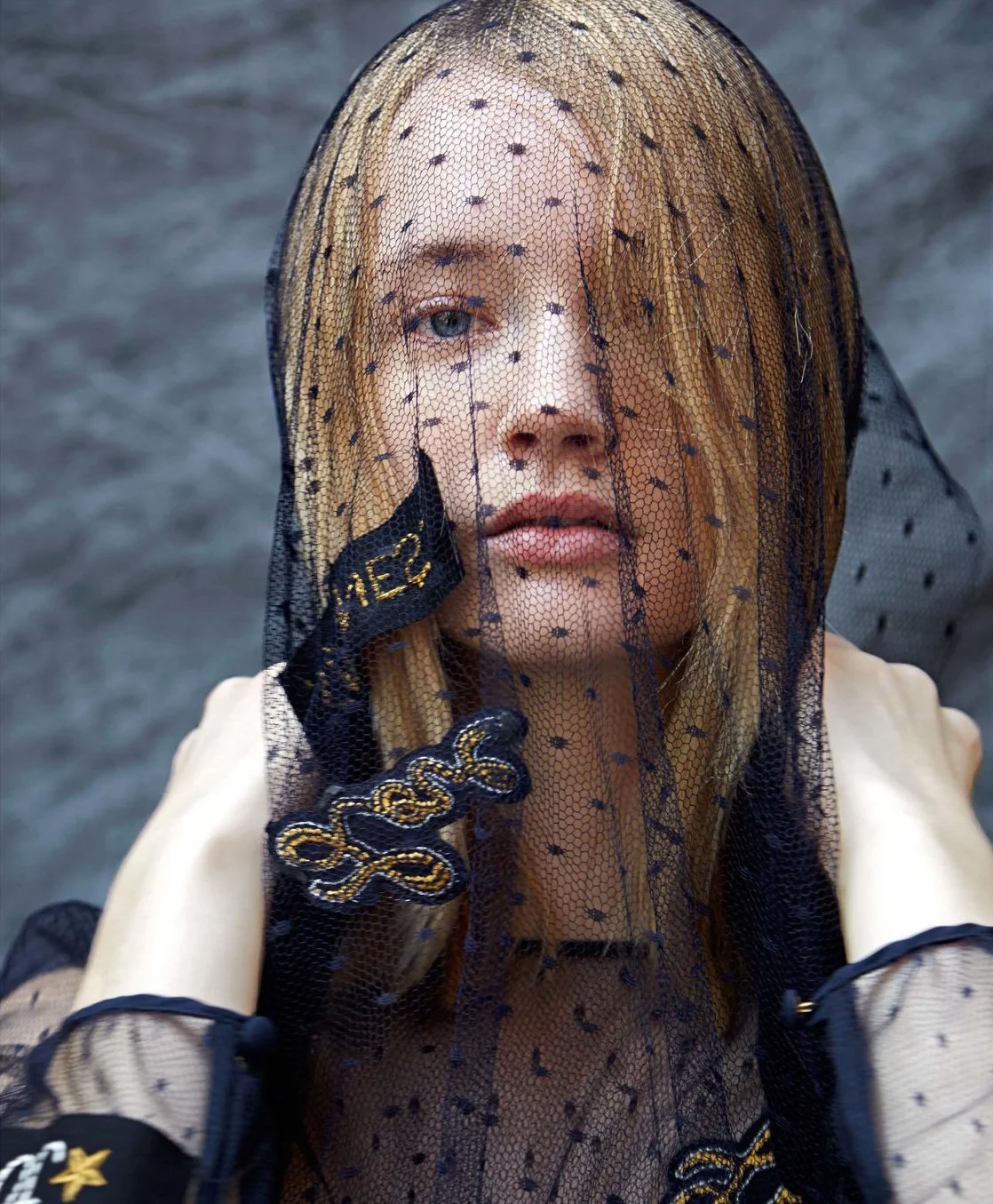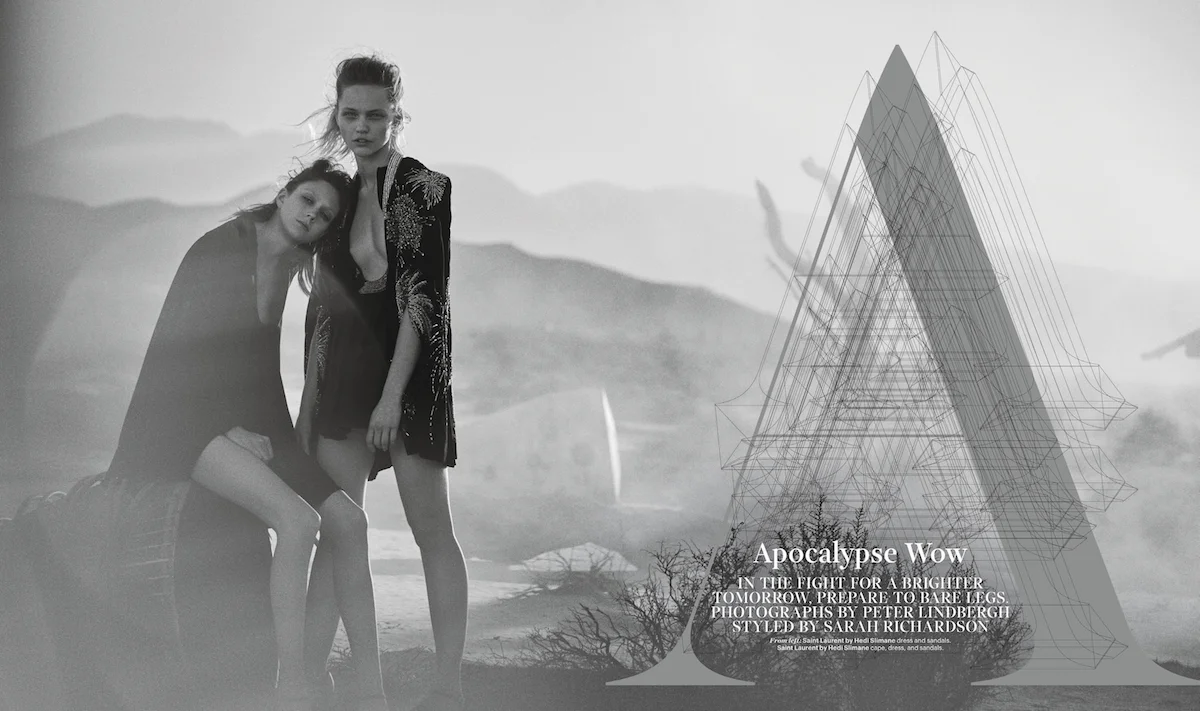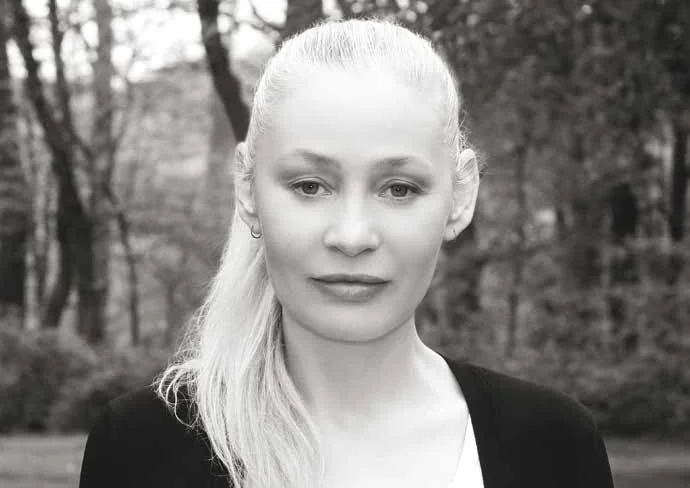Venetia Scott
There are few rocks within fashion’s 21st-century elite that glory in unrefinement, maintaining their outsider reputations, nursing connections to the anti-establishment and to a rebellion of the sort that isn’t manufactured by a roundtable of designers and editors with agendas to push and dollar bills to collect.
Venetia Scott is one of these gems, a true rarity of near-mythical status. A figurehead of the revolution that stormed London in the early ‘90s, which democratized fashion and disabled its hierarchy, she is as honest and authentic as such a history could elicit. Her styling work, photography, and interviews reveal a frankness that is unusual in fashion and consumer society. In an age when self-marketing is as key to the relevancy of a fashion career as the actual work produced, in which drug use is still touted as a societal marker of rebellion, Scott eschews social media, considering meditative time a signifier of modern counterculture.
Madison: You’re somewhat of an elusive character. Aside from a few notable interviews, you’ve largely stayed in the background. Twenty years ago this was the norm, but this sense of mystery has become increasingly rare when so many in fashion choose to be more recognizable (and often valued) for their social media and street personas than for their work. Of note: I couldn’t find your Instagram account. Did I not look hard enough? Is mystery important to you, or is it an accidental reaction to the self-promotion that many other fashion influencers are inclined towards? Is it just what feels natural to you?
Venetia: My lack of engagement with social media is not an intention, just a lack of interest in it. I have been tempted to take up Instagram, but think it might turn into a monster that needs constant feeding and attention.
How did you become interested in fashion and creating images, what’s your background? How did it lead you to your first job at British Vogue?
I went to a very dreary boarding school from a young age, which probably fueled my imagination. Since I was 13, I wanted to work in the fashion room of Vogue.
After you left Vogue, you found a footing in the anti-establishment. This so-called “fashion origin story” resonated with me as you seemed to find your niche in the deconstruction of the hierarchy, of the unraveling of fashion as this institution of good taste. What made you rebel against it all? Did you have a support group of other contemporaries feeling the same sense of revolution?
I think it was less of a rebellion than a newfound sense of freedom from institutions. I enjoyed being freelance and not having to toe the line, I enjoyed the leveling out of hierarchy. It was an exciting time and felt as if we were shaking up established formulas and letting in some fresh air.
I think it’s hard for the current generation to understand that before this movement, fashion was strict and exclusive, that there were rules and that they were not to be broken. We all know that Comme des Garcons and Margiela shook things up with black and with subversion, but I don’t think we fully appreciate that at that point, fashion equated to a label and a trend and about fitting an exact mold that was matched by a Trinity of supermodels and that that was it, that was beauty and it was almost the end of the discussion. Today we have Tumblr and everyone can learn the ins and outs of a subculture without leaving their parents’ living room, and that’s the basis for material and products that are “cool” and marketable now, which is a complete 180 from the period you entered fashion in. Can you explain exactly what anarchy was then, what it meant, and how it was received? How did it translate in editorial? Were you and your collaborators aware of the impact of what you were creating?
There was a sense of challenging the idea of beauty and introducing people who had a sense of fragility, freedom, imperfection; an empowerment, which had nothing to do with status symbols. Eighties’ fashion prior to this had touted the untouchable, polished, uber model and the new aesthetic broke this down and pushed characterizations that you could touch and empathise with. They were free of materialism. In terms of editorial, it did not go hand in hand with advertising at that point, so we were able to shoot young designers and introduce vintage clothing, which gave a reality to the pictures. The Face, Arena, and i-D gave us the pages to express what we wanted and not compromise. There was an exciting movement going on in London. The teams involved were working independently, but had a common thread, which was to alter the ideal..
What was your aesthetic, who was your girl (or boy)? What did you imagine for the stories you were creating, where was it sourced?
My girl (or boy) is the same now as then. Bold, open, warm, not too self controlled, and ready to work. The source could be movies, stories, photographs, memories, nature and people I meet.
You’ve said your original work’s goal was “to convey the spirit of somebody.” So much of fashion revolves around illusion and becoming an ideal rather than celebrating an individual for what and who they actually are. How were you able to meet your goal, what was the process like? How has it changed, and how do you see it evolving in the future?
‘The spirit of somebody’ might be a fictitious somebody that I have thought up. I need a subject who will be open and willing to understand, project and collaborate. Nothing has changed for me in this process.
After the fashion backlash out of London was co-opted and commercialized into an advertised movement, did you move on, or did you feel pigeonholed into a certain aesthetic? I can imagine that would feel somewhat heartbreaking if you felt invested in it as anarchic.
Ideas or images that are interesting have a tendency to be adopted into the mainstream. This pushes you to explore other territory, which moves things forward.
“I don’t feel I have to fight, but I do have a constant battle with myself as to whether work is good enough or as good as it can be.”
Was your first big sort of (I hate to call it this, but) “I made it” moment the Marc Jacobs contract, or did it come earlier? Fashion can be so competitive- do you feel like you still have to fight to stay on top of your game?
I have never really been interested in a career trajectory, but the Marc Jacobs contract came at a good time and continued for 14 years. I’m competitive with myself, not with other people. I don’t feel I have to fight, but I do have a constant battle with myself as to whether work is good enough or as good as it can be.
You’re now focused on photography. Did you get tired of styling, or did you become disillusioned with that aspect of fashion? How did the switch happen, and was it inspired at all by your former partner, Juergen Teller, and his passion for his work?
I still enjoy the styling aspect of image making and I find by marrying the styling and photography side, it helps to tie everything together. When Juergen and I were together we had a deep understanding of what each other wanted. When we stopped working together, I felt I was probably better at interpreting my thought process than someone else.
You’ve said that you’re “bored” by what you see in magazines today. This discontent, has it always fueled you? As a stylist, and now as a photographer, do you channel that into your work?
Discontent does not fuel me. I try not to channel what other people are doing into my work, I prefer to work in a vacuum.
I feel like we’re in the wave of another major fashion revolution, there’s a huge backlash against good taste and what is universally regarded as “status,” which is likely happening in tandem with the riots, and protests, and general sense of upset and revolution within mainstream culture. At the time of your fashion coming of age, were there other events happening outside of the industry that inspired your sense of change and urgency?
At the end of the 80’s the consumer bubble burst, recession hit and there was a rise in unemployment. The Berlin wall came down, there were revolutions in Romania, Czechoslovakia, and Poland, and the Soviet Union was dissolved. Global warming became an issue and people were dying of AIDS every day. The feeling of indestructibility and power had gone and there was a new era of vulnerability, but also freedom. I think all these events contributed to the image making of this time. It became less about owning things and more about human interaction and shared experiences. There was a backlash to the aspiration of wealth, jobs, and status. Designer handbags and high heels no longer seemed cool and were replaced by Birkenstocks, t-shirts, and long skirts. The drug was ecstasy and the rave culture took over. Kate Moss was the poster girl for this new sense of fun and abandon and the existing establishment started to look old-fashioned.
How do you see your aesthetic changing and expressing itself further?
It is more of an evolution than a change of aesthetic. Maybe it’s like getting older, you are still essentially the same person but you have a different perspective on things.
There is an honesty and sincerity in all of your work. It’s very refreshing. With so much of current fashion work being fueled by advertising dollars, do you have to make a conscious effort to maintain that authenticity? Further, have you distanced yourself from fashion in any ways for these reasons?
I’m a hopeless liar, too transparent. I like to work with a small team of people that I can trust and can be open with. I have no reason to disconnect myself from an industry, which I love and have enjoyed for over 30 years. It’s less distracting not to be in the thick of it!
Many people, especially those in print, can be terrified of the future, in all of its forms, and the rapid onset of new technology. For your line of work, for instance: the switch from film to digital, and from print to digital. How do you envision this changing the landscape of fashion and of photography? Are you hopeful or fearful, and what are your wishes for the upcoming generation of those you’ve inspired?
I prefer not to look too far ahead. There’s enough going on every day. I still shoot on film as well as digital. My hope for the next generation is not to be too driven by materialism.
What is radical now?
Leaving time to think.
















